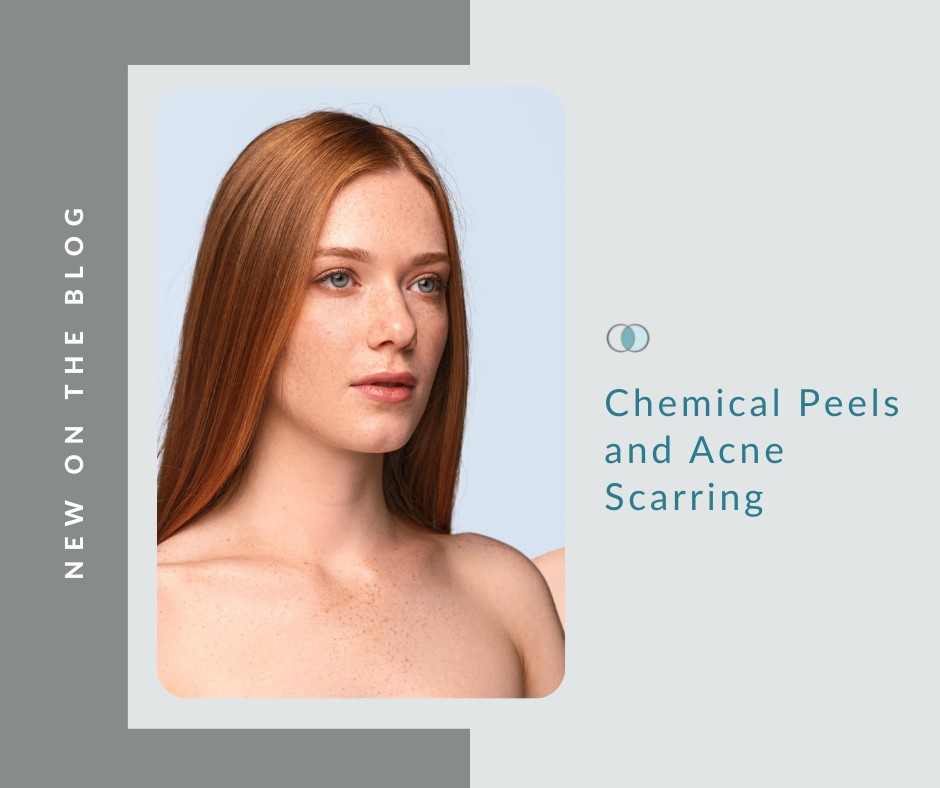
Chemical peels might be the best solution for your acne scarring, and this procedure works well in tandem with other treatments such as microneedling or laser skin rejuvenation. All of these procedures and treatments are available at Palo Alto Laser and Skin Care. Acne is a medical condition which can be serious, and frustratingly enough it doesn’t always end when the breakouts are controlled. Acne scarring is common and can lead to self-esteem issues for many patients. Oftentimes, these scars are permanent, particularly for those with cystic acne.
Acne scars are a result of inflammation and can occur even if you don’t pick your pimples, and even when you follow all acne treatment best practices. There are two kinds of acne scars, atrophic and hypertrophic. The atrophic kind create a depression or dent in the skin because the fat, collagen, or other tissue at the site is damaged. Contrarily, hypertrophic scars are raised and result from an influx of collagen, or the body’s attempt to over-treat the trauma. Chemical peels can help with both kinds of scarring, but are best reserved for atrophic scars.
How Peels Work
Chemical peels are a type of exfoliation comprised of various chemicals. It’s a type of controlled injury and your aesthetician will select the best peel for your skin and kind of scarring—some peels are not suitable for those with more melanin, but we have peels for every skin tone. Peels literally peel away the top layer or layers of skin, effectively removing acne scarring. At the same time, peels speed up skin cell turnover to stimulate collagen production. This means the results of a peel keep getting better in the days and weeks following the treatment. There are three grades of peels—light/superficial, medium, and deep—though the vast majority of peels used today are light or medium. The first two kinds require little to no downtime, while deep peels are often administered by surgeons under anesthesia because they are painful and require a long recovery period.
Peels are considered the first line of treatment for atrophic scars, but are only sometimes used for hypertrophic scarring. This is because peels on hypertrophic scars can sometimes make the scarring worse. For hypertrophic scars, a better approach might be laser skin rejuvenation. However, if you have atrophic scars, a medium-depth peel is usually the best bet. Scars are often deeper than light lines and brown spots, so you’ll want a more aggressive peel that can actually remove the layers of skin holding the atrophic scars.
Treating Multiple Skin Issues
You’ll probably treat more skin concerns than just acne scarring if you opt for a chemical peel. Peels can also be effective in addressing sun damage, fine lines and wrinkles, hyperpigmentation (including melasma), and even razor bumps. Those with sensitive skin or conditions such as eczema, seborrheic dermatitis, and psoriasis should heed extra caution when thinking about a chemical peel. Peels can trigger or worsen these conditions and healing might not be as desired. You can talk about your dermatological medical history and concerns during your consultation to see if a peel really is right for you and your acne scarring.
There is not a lot of pre-treatment prep, though you should avoid the sun and certain topicals like retinoids for a few days before treatment. After your peel, continue to avoid the sun since your skin is now “new” and vulnerable. A gentle cleanser and moisturizer twice per day will speed up healing. Some peels can cause flaking and it’s critical not to pick at these flakes—as this can result in scarring or hyperpigmentation and even infection. Skin requires a full cycle of recovery, typically 28 – 45 days, to regenerate itself. Until that time, skin is raw even if it looks healed.
Do you think chemical peels are your answer for acne scarring or another condition? Find out more during a consultation with an expert aesthetician, every one of them trained by the highly qualified Zuzana Likar (to exacting standards). Contact Palo Alto Laser and Skin Care today to schedule your consultation by calling the office or filling out the online contact form right now.
